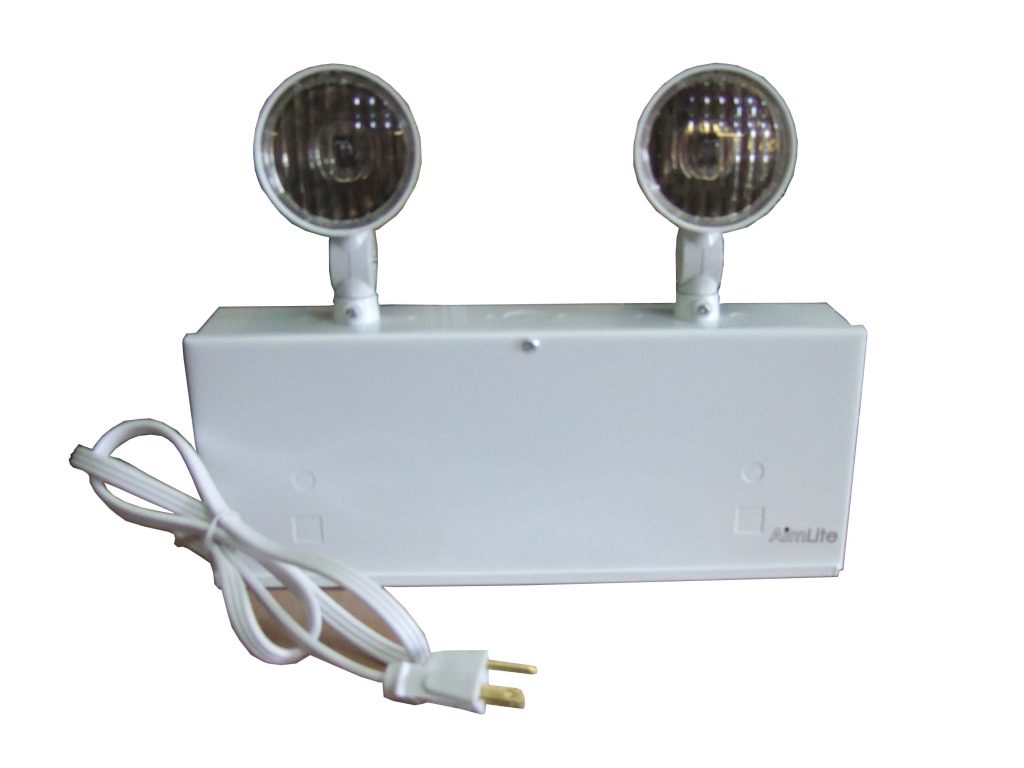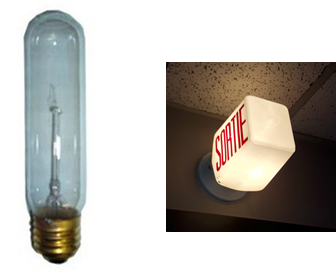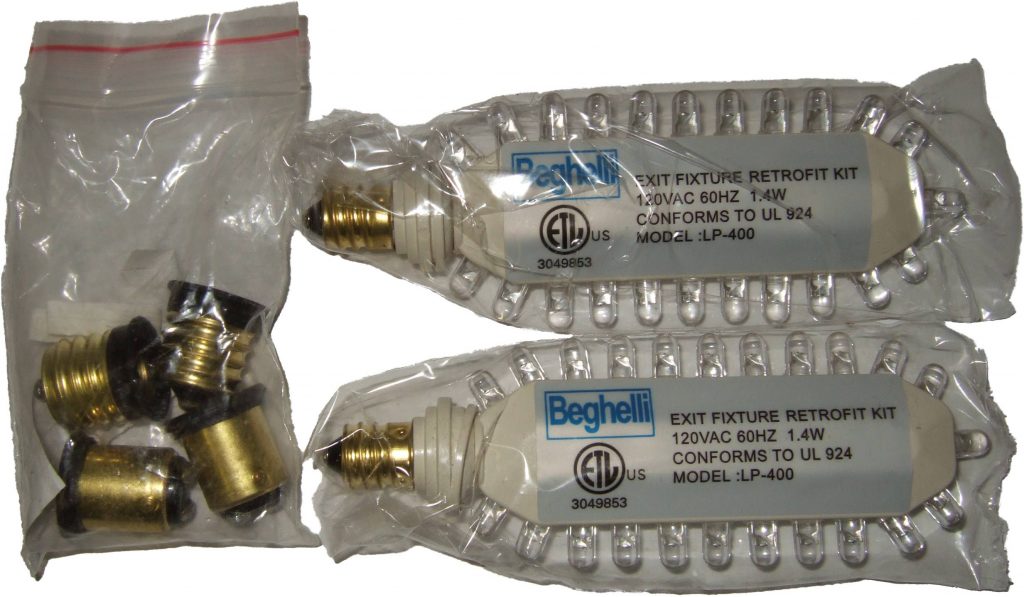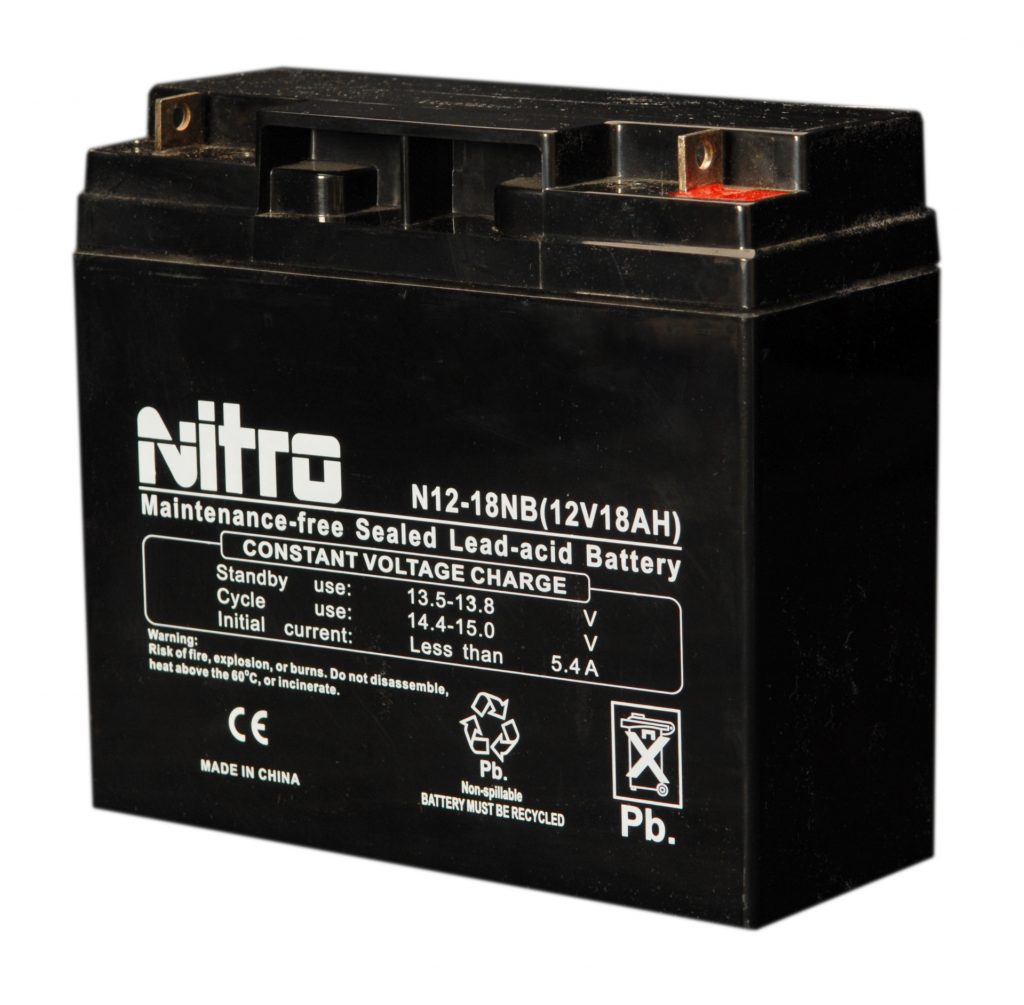How many times have we not noticed after a power outage that several emergency lights were not working properly? If we’re lucky enough to know the area well, everything is fine. This means that if you are new to the building, it is very difficult for you to find your way out. This can lead to a difficult evacuation or even panic during the event. However, most buildings are required by law to have emergency lighting which is designed to activate automatically during power outages in order to facilitate the exit to an emergency exit or escape route.
An emergency exit is an exit intended to allow rapid evacuation of the premises by persons who are present in the event of a disaster. These exits may correspond to the normal entrances of the occupants. They lead to the outside of the building. Persons present during an emergency must use a part of the building that allows for the evacuation of the occupants. This may be access or circulation routes, such as a door, exit, exit, corridor, horizontal circulation or circulation area, ramp, or stairway. These pathways are the common routes for evacuation. However, the additional, mandatory clearances imposed are not always judiciously distributed.
Yet the regulations in this area are clear. To this effect, section 3 of the Regulation respecting Occupational Health and Safety (R.S.S.T.) in section II (concerning emergency lighting in particular) states that their purpose is « to ensure the quality of the work environment, to protect the health of workers (of all persons present) in order to ensure their safety and physical integrity.” This text is only a short passage from this article of the Regulation. Indeed, to do so, alarm and detection systems as well as emergency lighting must always be in working order.
Signage at emergency exits is therefore another of the necessary or even mandatory equipment. It ensures the safety of persons attending an establishment open to the public or a workplace while complying with the standards in force. Emergency exit signs and pictograms can be used in public places such as shopping malls, hotels, theaters and all places where people go to work. Easy and quick to install, they are available in several models, dimensions and materials to perfectly match the safety needs of people.
Emergency lighting allows occupants to reach the exits to the outside easily and safely. Depending on the type of installation, requirements may vary.
Emergency lighting consists of self-contained, battery-powered emergency lighting units that are automatically switched on following a power failure or failure of the lighting circuit in the building.
Depending on the applicable code, either provincial or federal. The primary purpose of these regulations is the same: to ensure safety and security on the escape route from residential, commercial and industrial buildings. Regardless, the code that applies to this type of equipment requires technical monitoring to ensure that, when the time comes, this equipment will take over from the so-called normal lighting and will indicate to those present the route to evacuate the premises.
Emergency lighting must provide an average illumination level of 10 lux or 1 foot-candle and at least 1 lux or 0.1 foot-candles on the floor and step levels in areas such as exists, main access routes at the end of a floor area, corridors used by the public, underground pedestrian crossings and others.
This change includes a requirement for the installation of smoke detectors near access to pedestrian crossings in adjacent buildings where a fire alarm system is required. These detectors would provide a warning of the potential presence of a fire hazard from the connected building. An exception is permitted for industrial occupancy (Group F occupancy) that may have heat detectors rather than smoke detectors to reduce the possibility of false alarms.
Lighting in the establishment, where necessary, must be electric and emergency lighting must be provided in all cases.
THE FUNCTIONING
Continuous cyclic operation is required for all emergency lighting batteries. Otherwise, it is unlikely to operate when the time comes. Batteries that are not cycled have a life expectancy of no more than 3 years. Batteries that are regularly cycled have a minimum life of 5 years. The replacement cycle for ideal batteries is 4 years, thus providing the required lighting time.
Most battery-powered emergency lights can include a self-test function to facilitate compliance with this code requirement. The 30-minute discharge test is intended to simulate an emergency situation in accordance with NFC requirements. However, attention must be paid to false confirmations of operations. Technicians performing discharge tests can tell you that your emergency lighting is functional. YES, BUT FOR HOW LONG?
The 30-minute discharge test performed after 24 hours is designed to ensure that the product will be ready. In the event of a power outage, CSA requires that all emergency power supplies be fully charged within 24 hours.
WHAT TYPES OF EMERGENCY LIGHTING DO YOU PROVIDE?
The most common models.
– Battery units use sealed lead-acid batteries in a variety of configurations to provide 6 VDC, 12 VDC or 24 VDC output.
– Satellite units are also available when AC power is shut off at the panel to which they are connected.
– This type of battery-powered equipment will operate for the minimum time required by the code, i.e., 30 minutes, or up to a maximum of 120 minutes. Please note that for high-rise buildings the minimum time is 1 hour.
There are also other types of emergency lighting.
– These are self-powered, « Interruptible power supply » or « Interruptible power supply » type equipment. They are standby or emergency equipment with non-instantaneous transfer.
– There is also emergency lighting with no load break. This equipment is also called UPS « Uninterruptible power supply » or uninterruptible power supply. Also called uninterruptible power supply. They maintain 1 charge cycle 24 hours a day, 7 days a week, and the transfer is imperceptible.
Both types are battery operated, they use either 12 VDC or 24 VDC battery power and convert it to 120 VAC for a minimum of 30 minutes on a single circuit. This allows regular fixtures to provide 100% of their rated lighting power in both normal in the mode and during a power outage.
Emergency lighting provides continuous AC power and a single point of service for large commercial, industrial or institutional projects.
Do you have generator-type lighting?
Emergency generator-type emergency lighting does not require a battery, but a diesel or propane-powered tank farm must provide power to operate the lighting and signage that are essential in the event of a main power failure.
The transfer time varies on these systems depending on the type of electrical voltage. This transfer can take between 10 and 16 seconds, depending on the loads and age of the systems. These systems are used in large condominiums and industrial projects.
There are several elements that make emergency lighting a special category. We have reviewed the principles of emergency lighting.
You will be able to find all the equipment available to set up your emergency lighting and much more. No doubt you also need technical advice? Here are a few items available at Sylprotec.
Emergency lighting combo unit with green « Person running » pictogram, LUMRC.

Sign with green pictogram « Person running » for emergency exit, LUMRM.

120V « Exit » sign without batteries, steel case. (The old model sees it replaced by the green pictograms with person running), LUM.

Sign in English « EXIT » 120 V without batteries. The old model sees it replaced by the green pictograms with person running. LUMA.

3W 235 Lumen with led bulbs, for emergency lighting, LAMSPW.

Emergency lighting unit 6 V 36 W with 2 spots. LU6362MT.

Single head remote spotlight with lamp,6V to 12V, 3W, LUMT1LED.

Del light bar for emergency « EXIT » lighting unit, LCBD142.

6 Volt D.C. 8 Watt sealed beam headlamps for emergency lighting units, LA68SB.

Emergency lighting unit 24 V 550 W With 2 Headlights, LU245502MT.

130 V T10 Bulb with a wide base for emergency lighting, LA130G.

Retrofit kit with 2 X 1.5 W DEL 1.5 W bulbs for « EXIT » signs, LALED.

Harness for led bar (light-emitting diodes), LCDBA322R.

12 V 9 W Bulb for emergency lamps, LA129.

12 V 9 W Bulb for emergency light emergilite, LA129E.

Replacement battery for exit signs Amlite LUMB AND LUMB models, LBLUM.

Stripe light 17 Inch AC 120 to 347 Volts, DC 6 to 24 Volts, LCB071433.

Pictogram output display photo luminescent running man without arrow, EI308PH.

Battery 12 V 12 AH 144 W for emergency light units, LB1212.

Battery 12 V 18 AH 216 W for emergency lighting units, LB1218.

Sylvain Patrice f.p.t.
By the same author:
Presentation of the Polyflex® interior fire hose model from Mercedes Textiles Ltd.
Presentation of TRYME® hose manufactured by Mercedes Textiles Ltd.
How many fire extinguishers do I need to install and what size extinguisher should I choose?
Steps for performing an inspection on portable fire extinguishers.
Emergency lighting the principles of operation.
Signage in an industrial environment.Posters in industrial settings in Canada.
